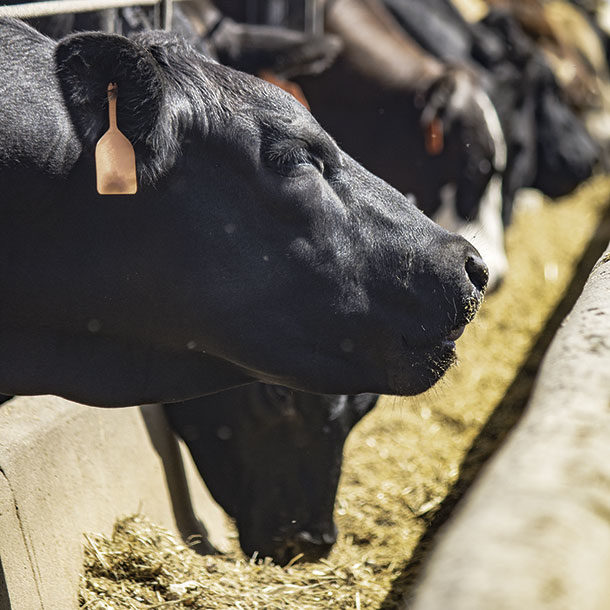Phytogenic feed additives (PFA) are a combination of the bioactive and flavoring components of plant-derived substances including essential oils, herbs, spices and plant extracts. The use of phytogenic products in the animal feed industry has been around for decades; however, with recent implementation of the Veterinary Feed Directive, there has been more interest in improving and developing PFA formulations to target improved gut health and performance with an overall target to reduce the use of antibiotics.
Developing an effective species-specific, targeted PFA is a challenging task. It takes a vast understanding of the ingredient properties and source, active compounds and interactive effects to provide a certain targeted bioactive effect. The development of an effective PFA begins with strong quality control to ensure consistency, followed by thorough research and field application supporting product efficacy.
When it comes to PFA formulation, many factors contribute to the selection of active ingredients, which are carefully chosen for different biofunctional groups including sensory and bioactive properties. Sensory characteristics contribute to the aroma and taste of the compound, often leading to improved palatability and diet acceptance, and thus improved feed intake. On the other hand, bioactive characteristics target a number of areas including anti-inflammatory, antioxidant and anti-microbial properties, which have shown to contribute to digestive health and performance as well as have a positive environmental impact in the reduction of greenhouse gases.
Phytogenic feed additives in feedlots
Phytogenic feed additives formulated specifically to overcome challenges within feedlots have shown a number of positive benefits ranging from reducing oxidative stress, anti-inflammatory effects, support against pathogens and improved gut function, all leading to improved performance.
Causes of reduced profitability in the feedlot are most commonly associated with health and nutrition in the receiving period, reduced performance associated with heat stress and inflammation, and carcass performance losses.
Negative effects on health and growth performance in receiving calves are often associated with some form of stress, leading to inflammation and reduced gut integrity. From disease challenge, diet changes, management, transport, metabolic disease and others, calves are highly susceptible to performance and economic losses upon arrival at the feedyard.
Most disease outbreaks occur in the first few weeks in newly received calves due to compounded stress and reduced circulating nutrient levels. Including the right PFA in starting rations has shown to result in numerous benefits. Research supports enhanced diet acceptance and stimulation of feed intake, which increases circulating nutrient levels, gut integrity and reduces risk of metabolic-related diseases in newly received cattle in the feedlot.
Across species, anti-inflammatory properties are perhaps one of the greatest contributions to animal health and performance provided by phytogenic products. Inflammation is the result of the initial phase of the immune response when an animal is faced with a microbial infection or a tissue injury. Since up to 70% of the immune system resides in the gastrointestinal tract, improving gut integrity is of utmost importance to drive optimal nutrient absorption as well as optimal immune function.
Often in beef production, the main concern with liver health is associated with liver abscesses, which cost the beef industry millions of dollars every year in condemnation, trim and performance losses. Phytogenic compounds found in mint, garlic and licorice have shown to have positive effects on liver health and may be the future of reducing or replacing antibiotic use in the control and prevention of liver abscesses in the feedlot. Recent published research evaluating PFA-fed cattle on liver abscess prevalence reported a significant reduction in severely abscessed livers in commercially fed feedlot cattle.
Heat stress is a common challenge in confined feeding operations throughout the U.S. also shown to impair gut integrity. It has been suggested that a capsaicin or chili pepper-based PFA may be fed as a vasodilator to increase blood flow and stimulate water intake. Although research in this area has confirmed a vasodilation effect and increased blood flow to the extremities, it has also shown vasoconstriction in the gastrointestinal tract and inhibition of nutrient uptake. As an alternative option, there are PFAs available that work to maintain gut functionality and reduce inflammation, thus indirectly building resilience in the animal against a broader spectrum of stress challenges, including heat and cold stress.
Genetic selection and carcass-merit grid and formula pricing systems are two contributing factors that have supported the rapid growth of more Choice or Prime carcasses. Consequently, Select grade beef has declined in recent years and estimated to reduce to 10% by 2022 and to 5% by 2025.
To enhance these efforts of producing better-quality beef, PFAs may play a contributing role. Research of PFA-fed cattle suggested a modulation of the biohydrogenation response in the rumen and improvement in the fatty acid profile of meat. The shift from saturated fatty acids to unsaturated fatty acids supports improved marbling from increased levels of intramuscular fat within the tissue, contributing to improved quality grade or complementary to the industry efforts to phase out Select beef.
As more feedlots are adapting the use of PFAs in diets for specific challenge areas, there are continued efforts to further discover, develop and provide more PFA options that provide a multitargeted approach to improve the performance, health and profitability of beef cattle production.








